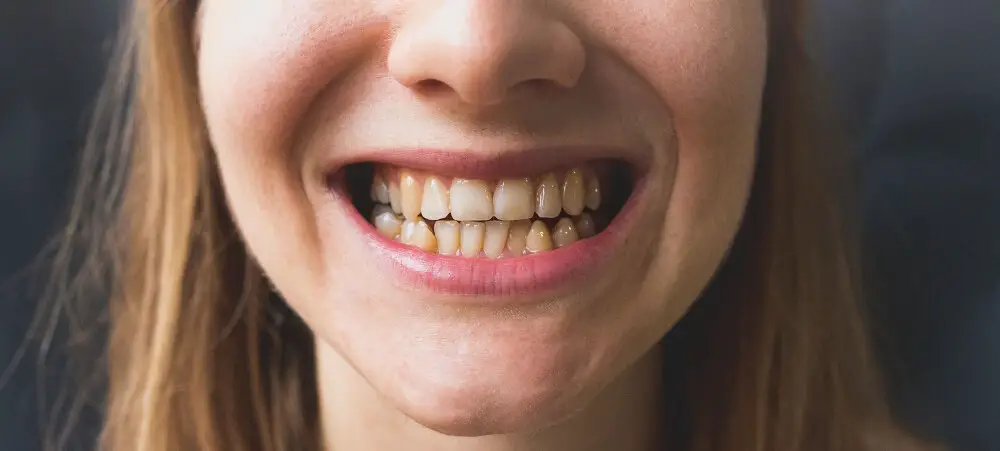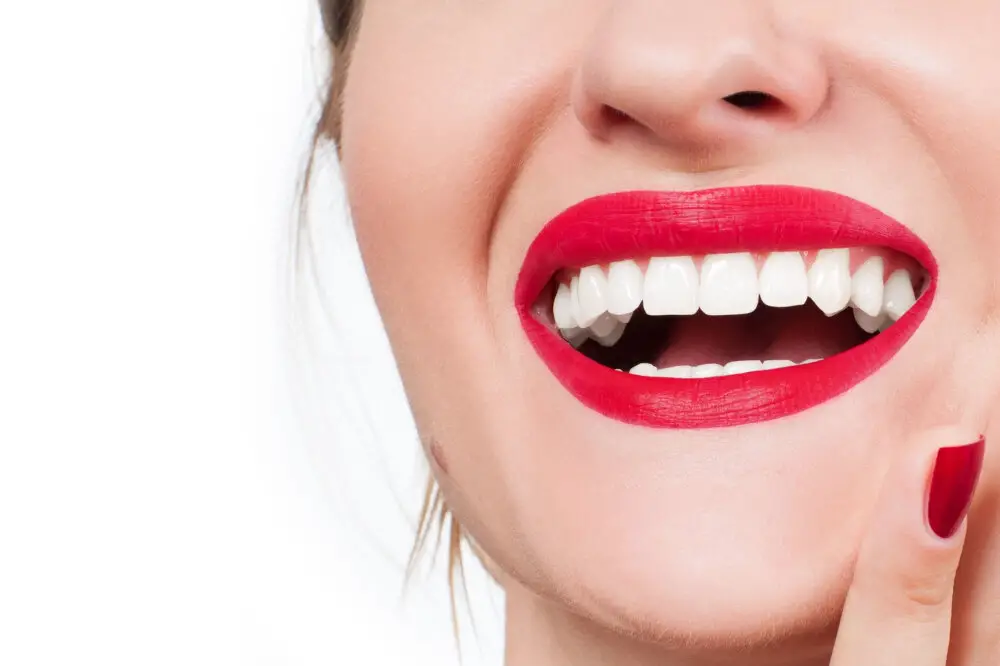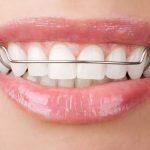How Long Does Teeth Whitening Take? A Comprehensive Guide to Achieving a Brighter Smile

A bright and dazzling smile is often considered the hallmark of good oral hygiene and a healthy lifestyle. However, yellow or stained teeth can be a source of embarrassment for many people. Teeth whitening is a popular and effective cosmetic dental procedure that can help you achieve a brighter and more confident smile. But the burning question on everyone’s mind is – how long does teeth whitening take?The answer to this question depends on various factors such as the type of whitening treatment, the severity of the discoloration, and your oral hygiene habits. In this comprehensive guide, we will explore the different teeth whitening options available, their effectiveness, and the time required to achieve the desired results. Whether you opt for in-office treatments or at-home remedies, this guide will provide you with all the information you need to make an informed decision and transform your smile.
Teeth whitening is a cosmetic dental procedure that aims to lighten the color of teeth and remove any stains or discoloration caused by various factors such as aging, smoking, drinking coffee, tea, or red wine, and poor oral hygiene. The treatment involves the use of bleaching agents that penetrate the enamel and break down the molecules that cause discoloration. Teeth whitening can be done in-office by a dentist or at home using over-the-counter products such as whitening strips, gels, or trays. It is a safe and effective way to improve the appearance of your smile and boost your self-confidence. However, it is important to note that results may vary depending on the severity of the stains and the type of treatment used.
Teeth whitening has been around for centuries, with ancient civilizations using various methods to brighten their teeth. In the 17th century, barbers were known to use acid to whiten teeth, which often resulted in permanent damage to the enamel. In the 18th century, a mixture of vinegar and cream of tartar was used. The first commercial toothpaste containing hydrogen peroxide, a bleaching agent, was introduced in the 1800s. In the 1980s, dentists began using carbamide peroxide as a bleaching agent, which is still widely used today. With the advancement of technology, various teeth whitening options are now available, including in-office treatments, at-home kits, and natural remedies.
Factors That Affect Teeth Whitening

Teeth whitening has become increasingly popular in recent years, with more and more people looking to achieve a brighter, whiter smile. While teeth whitening can be an effective way to improve the appearance of your teeth, there are several factors that can affect the outcome of the treatment. One of the most important factors is the type of stain on your teeth. Teeth can become discolored for a variety of reasons, including smoking, drinking coffee or tea, and aging. Certain types of stains, such as those caused by smoking or drinking red wine, may be more difficult to remove than others. In some cases, these stains may require multiple treatments to achieve the desired level of whitening. Another factor that can affect teeth whitening is the type of treatment you choose. There are several different types of teeth whitening treatments available, including in-office treatments, take-home kits, and over-the-counter products. In-office treatments are typically the most effective, as they use professional-grade whitening agents that can penetrate deep into the tooth enamel. Take-home kits and over-the-counter products may be less effective, but they can still produce noticeable results over time. The key is to choose a treatment that is appropriate for your needs and budget, and to follow the instructions carefully to ensure that you achieve the best possible results.
There are two main types of stains on teeth: extrinsic and intrinsic. Extrinsic stains are caused by external factors such as smoking, drinking coffee, tea, or red wine, and poor dental hygiene. These types of stains usually appear as yellow or brownish discoloration on the surface of the teeth. In contrast, intrinsic stains are caused by internal factors such as aging, genetics, or exposure to certain medications or excessive fluoride. These types of stains are usually more difficult to remove, as they are embedded in the tooth’s enamel and appear as grayish or brownish discoloration. Understanding the type of stain on your teeth is crucial in determining the best teeth whitening method to achieve a brighter and whiter smile.
There are several types of teeth whitening treatments available today. The most common and effective ones include in-office treatments, at-home treatments using custom-made trays, and over-the-counter products such as whitening toothpaste or strips. In-office treatments can be completed in a single session and are typically the most expensive option. Custom-made trays, on the other hand, require several weeks of use but offer more control over the whitening process. Over-the-counter products are the most affordable option, but may not provide the same level of whitening as professional treatments. Regardless of the method chosen, it is important to follow the instructions carefully and consult with a dental professional to ensure safe and effective results.
Lifestyle habits can greatly affect the success of teeth whitening. Regular consumption of dark-colored beverages such as coffee, tea, and red wine can cause staining and discoloration of teeth. Smoking cigarettes or using other tobacco products can also cause yellowing and staining of teeth, making it difficult to achieve a brighter smile. Poor oral hygiene can also affect teeth whitening results, as plaque buildup and tartar can cause teeth to appear dull and discolored. To enhance the effectiveness of teeth whitening, it is recommended to maintain good oral hygiene habits, avoid smoking and limit consumption of staining beverages.
How Long Does Each Teeth Whitening Treatment Take?

The duration of each teeth whitening treatment can vary depending on the method used, the severity of the discoloration, and the individual’s personal preferences. In-office treatments typically take around one to two hours, during which a professional-grade whitening gel is applied to the teeth and activated with a special light or laser. This process can provide noticeable results in just one session, making it a popular choice for those with time constraints or special occasions. However, in-office treatments can also be more expensive than at-home options, and may cause temporary sensitivity or discomfort. At-home whitening kits, on the other hand, typically require several applications over the course of several days or weeks. These kits usually come with custom-fitted trays filled with a lower concentration of whitening gel, which can be worn for 30 minutes to several hours per day. While the results may take longer to achieve, at-home kits can be more affordable and convenient for those with busy schedules. It’s important to follow the instructions carefully and avoid overusing the product, as this can lead to gum irritation and other complications. Ultimately, the duration of each teeth whitening treatment will depend on a variety of factors, but with the right method and approach, a brighter, healthier smile can be within reach.
In-office teeth whitening is a popular cosmetic dental procedure that involves the application of a bleaching gel to the teeth followed by exposure to a specialized light source. This treatment is performed by a qualified dentist or dental professional, and typically takes about 60-90 minutes to complete. In-office teeth whitening can produce dramatic results in a short amount of time, making it an ideal option for individuals seeking immediate improvements to the color and brightness of their teeth. While the cost of in-office teeth whitening may be higher than at-home treatments, the results are often longer-lasting and more effective. It’s important to note that not all individuals are candidates for in-office teeth whitening, and a consultation with a dental professional is recommended to determine the best course of treatment for each individual.
At-home teeth whitening kits have become increasingly popular over the years due to their convenience and affordability. These kits typically include a whitening gel or strips that are applied directly to the teeth. The active ingredients in the gel or strips work to break down surface stains and discoloration, resulting in a brighter, whiter smile. While at-home kits can be effective, it’s important to note that they may not produce the same dramatic results as professional treatments. Additionally, it’s crucial to follow the instructions carefully and avoid overuse, as excessive whitening can cause sensitivity or damage to the teeth and gums. Overall, at-home teeth whitening kits can be a great option for those looking for a quick and easy way to improve the appearance of their smile.
Natural teeth whitening remedies are a popular alternative to chemical treatments, as they are generally safe and cost-effective. Some of the most common remedies include brushing with baking soda or activated charcoal, rubbing the inside of a banana peel on teeth, using hydrogen peroxide as a mouthwash, and oil pulling with coconut oil. While these remedies may take longer to achieve results compared to chemical treatments, they offer a more natural approach to teeth whitening that does not compromise the integrity of the tooth enamel. Additionally, incorporating healthy habits such as reducing intake of staining substances like coffee and tobacco and maintaining good oral hygiene can help to enhance the effectiveness of these natural remedies.
The treatment times for teeth whitening can vary depending on the method used. In-office treatments typically take around an hour to complete, while at-home treatments can take anywhere from a few days to a few weeks. Over-the-counter whitening products like strips and gels may require daily use for up to two weeks to see results. However, it’s important to note that longer treatment times don’t necessarily equate to better results. In fact, some faster treatments, like laser whitening, can provide dramatic improvement in just one session. Ultimately, the best treatment option for you will depend on your individual needs and preferences, as well as the severity of staining on your teeth.
How Long Do Teeth Whitening Results Last?

Teeth whitening treatments can provide you with a bright, attractive smile, but how long do the results last? The answer depends on several factors, including the type of treatment you choose, your oral hygiene habits, and the foods and beverages you consume. Generally, the effects of teeth whitening treatments last between six months to two years. If you opt for an in-office teeth whitening treatment, the effects may last longer than those achieved through over-the-counter treatments. In-office treatments use a higher concentration of whitening agents, which can provide more dramatic results that last longer. However, even with in-office treatments, you will still need to maintain good oral hygiene habits and avoid foods and drinks that can stain your teeth to ensure that your results last as long as possible. Over-the-counter treatments typically produce results that last for a shorter period of time, ranging from a few weeks to a few months.
Teeth staining is a common dental issue that occurs due to various reasons, including poor oral hygiene, aging, smoking, and consumption of certain foods and drinks. The staining occurs when the outer layer of the tooth (enamel) becomes discolored, and the inner layer (dentin) starts to show through. This can result in teeth appearing yellow, brown, or grayish in color. Additionally, certain medications and medical conditions can also cause teeth staining. It is essential to address teeth staining as it not only affects the appearance of the teeth but can also impact oral health.
There are several factors that can affect the longevity of teeth whitening. The first is the type of whitening treatment used. In-office treatments tend to have longer-lasting effects than at-home treatments. Other factors include the individual’s diet, lifestyle habits such as smoking or drinking coffee, and oral hygiene practices. Regular brushing, flossing, and dental cleanings can help maintain the results of teeth whitening. Additionally, certain medications and medical conditions can also impact the longevity of teeth whitening. It’s important to discuss these factors with a dental professional to determine the best whitening treatment and maintenance plan for each individual’s unique needs.
After investing time and money into teeth whitening, it’s natural to want to maintain those pearly whites for as long as possible. To do so, it’s important to practice good dental hygiene by brushing and flossing regularly. Additionally, avoiding foods and drinks that cause staining, such as coffee, tea, and red wine, can help prolong the results of teeth whitening. If you do consume these items, be sure to rinse your mouth with water afterwards. Using a straw when drinking beverages can also help minimize contact with your teeth. Finally, consider touch-up treatments every six months or so to maintain your desired level of whiteness. By following these tips, you can enjoy a brighter, more confident smile for years to come.
Risks and Side Effects of Teeth Whitening

Teeth whitening is an effective and popular cosmetic procedure that helps individuals achieve a brighter and more confident smile. However, like any medical procedure, there are some risks and side effects associated with teeth whitening. One of the most common risks is tooth sensitivity, which can occur during or after the whitening process. This sensitivity can range from mild discomfort to severe pain, and it is usually caused by the peroxide in the whitening solution penetrating the enamel of the teeth. In some cases, this sensitivity can last for several days or even weeks after the whitening procedure. Another potential risk of teeth whitening is gum irritation or damage. This can occur when the whitening solution comes into contact with the gums, causing them to become inflamed or even bleed. In extreme cases, the whitening solution can cause chemical burns on the gums, which can be painful and require medical treatment. To avoid these risks, it is essential to choose a reputable dentist or teeth whitening specialist who can provide professional advice and guidance on the best whitening options for your individual needs. Additionally, it is important to follow all instructions carefully and avoid overusing or misusing whitening products.
Teeth whitening is a popular cosmetic dental treatment that can help you achieve a brighter, more attractive smile. However, it’s important to be aware of the potential risks and side effects associated with this procedure. Some people may experience tooth sensitivity or gum irritation after whitening, especially if they have preexisting dental problems. In rare cases, over-whitening can cause damage to the tooth enamel, leading to increased sensitivity and discoloration. To minimize the risk of these side effects, it’s important to choose a reputable dentist or dental professional and follow their instructions carefully. Additionally, it’s important to be realistic about your expectations for teeth whitening and understand that results may vary depending on your individual situation.
Teeth whitening is an effective way to achieve a brighter smile, but it’s important to take precautions to minimize risks and side effects. One way to do this is to choose a reputable dentist or dental professional who uses safe and approved products. Additionally, it’s recommended to use at-home whitening kits in moderation and follow the instructions carefully to avoid overuse and irritation of the gums. Maintaining good oral hygiene habits, such as brushing and flossing regularly, can also help reduce the risk of sensitivity and other complications. Finally, it’s important to consult with a dentist before beginning any teeth whitening treatment to ensure it’s safe and appropriate for your individual needs.
If you’re thinking about teeth whitening, it’s important to consult a dental professional first. They can examine your teeth and gums to ensure that they’re healthy enough for the procedure. Additionally, they can recommend the best teeth whitening approach for your specific needs, taking into account factors like the severity of your staining, your oral health history, and any previous dental work you’ve had done. Trying to whiten your teeth without professional guidance can lead to disappointing results or even harm your teeth and gums. So, before you invest time and money into teeth whitening products or procedures, make sure to consult a dental professional to get the best possible outcome.
In conclusion, achieving a brighter smile through teeth whitening is a process that involves several options, including professional treatments and at-home methods. The duration of the process depends on the chosen method, the level of discoloration, and individual factors. It’s essential to consult a dentist before starting any teeth whitening treatment to ensure the safety and effectiveness of the process. Moreover, maintaining good oral hygiene and avoiding substances that cause teeth staining can prolong the results of teeth whitening treatments. Overall, a brighter smile not only enhances our appearance but also boosts our confidence and self-esteem.
In conclusion, achieving and maintaining a brighter smile requires a combination of good oral hygiene practices and lifestyle modifications. Brushing and flossing regularly, avoiding staining foods and beverages, and quitting smoking are all important steps to take. Additionally, professional teeth whitening treatments can provide an extra boost to your smile’s brightness. However, it’s important to remember that teeth whitening is not a one-time fix and requires ongoing maintenance to ensure long-lasting results. Regular dental check-ups and touch-up treatments can help keep your smile looking its best. By committing to these steps, you can achieve and maintain a bright, confident smile that you’ll be proud to show off.
Conclusion

In conclusion, achieving a brighter smile through teeth whitening can be a great confidence booster and can help you feel better about your appearance. The length of time it takes to see results depends on the method you choose, but it is important to remember that patience and consistency are key. Whether you opt for at-home remedies or professional treatments, it is important to follow the instructions carefully and maintain good oral hygiene habits to maximize the results. With the information provided in this comprehensive guide, you can make an informed decision about the teeth whitening method that is best for you and enjoy a brighter, more radiant smile.






